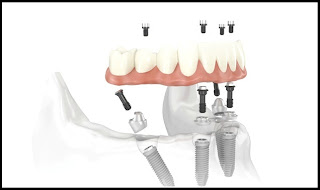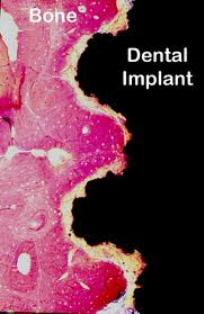This four-part article series explains the meaning to some rudimentary dental implant terminology that patients might come across on their journey to getting new teeth.
Welcome back to our four-part article series on some rudimentary terminology you might like to know if you’re thinking of having new teeth implants placed. In our previous article installment, the third part of the series, we reviewed some important terms pertaining to full mouth reconstruction, including bone grafting, which is a procedure that is done to augment and encourage the growth of new and healthy bone tissue in the jaw so that dental implants can be placed. We also provided a brief description of the All-on-4 dental implant protocol and osseointegration, the process whereby bone tissue forms a strong biological bond with the titanium surface of an implant.
In this article, the final installment of our four-part series, we’ll provide a brief explanation of tooth anatomy before discussing the various oral conditions that cause tooth loss and Cone Beam Computed Tomography, an indispensible diagnostic tool used by the oral specialists that offer patients new teeth with dental implants.
Dental Terminology You Might Like to Know!

The Anatomy of a Tooth: Your teeth consist of a hard outer coating of dental enamel, which protects the delicate insides from infection and contamination by bacteria. Beneath the enamel is a slightly softer and more porous substance called dentin. Within the heart of the tooth resides the pulp chamber, within which lie all the tooth’s nerves and blood vessels (called the pulp). This chamber narrows at the base of the tooth into the thin canals that run the length of the roots (root canals).
Cone Beam Computed Tomography (CT): CBCT is a diagnostic imaging tool that emits a cone-shaped beam of X-ray radiation. The resultant images are translated into digital data by the machine and this is fed into a computer software program. The oral specialists who use CBCT can use this software to view a highly detailed and accurate 3-D picture of their patient’s dentition, tooth orientation and jawbone structure (see image below). This, in turn, enables them to plan dental implant surgery before the patient has even come in for the procedure. By determining the best possible sites for dental implant placement prior to surgery, oral surgeons can reduce risks, complications and the chance of implant failure. Cone Beam CT also decreases the degree of invasiveness, thus decreasing recovery time and patient discomfort.

Periodontal (Gum) Disease: An advanced oral bacterial infection of the gums surrounding the teeth. Periodontal disease, or periodontitis, is the advanced stage of gingivitis and is marked by gum inflammation and recession, chronic bad breath, oral lesions, tooth discoloration and tooth loss. Periodontal disease is the number one cause of tooth loss in the United States. Risk factors for this condition include smoking, heavy drinking, poor oral hygiene and illnesses such as diabetes, osteoporosis and rheumatoid arthritis.
Edentulism: The state of not having a single original adult tooth left. There are currently an estimated 38 million edentulous people living in the United States. These people desperately need new teeth, yet instead of opting for a sophisticated teeth replacement solution like the All-on-4, they instead tend to wear removable dentures.
Plaque: A whitish sticky substance that can be scraped off the teeth with a fingernail. Under the microscope, plaque is revealed to be millions upon millions of bacterium. There are over 700 different kinds of bacteria in plaque!
Tartar: Hardened deposits of plaque, which offer bacteria an excellent hiding place away from the roving bristles of your toothbrush. Tartar causes tooth decay and tooth loss... and it can only be removed by a dental healthcare professional, which is why it’s so important to visit your oral hygienist twice a year!







